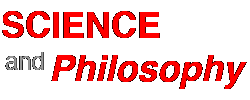Reading on: Neuroscience and self/soul
Churchland, Patricia Smith Brain-Wise: Studies in Neurophilosophy The MIT Press, Cambridge, MA 2002 [abridged – 790 words]
The brain makes us think that we have a self. Does that mean that the self I think I am is not real? No, it is as real as any activity of the brain. It does mean, however, that one’s self is not an ethereal bit of “soul stuff.” But it is as real, for example, as the coherent neuronal activity that yields your capacity to walk or think about global warming or find your way back from a hike in the bush. Brain activity is an entirely real thing.
But, one might say, that is not how I am used to thinking of myself. Why would my brain lie to me? Think of it this way. Fundamentally, your brain’s task is to allow you to make your way in the world, and that means it needs to be able to make reasonably good predictions, and to make them in a timely manner. One’s scheme of representational devices need not be the best possible in order to have practical and predictive value. It just has to be good enough so that you can make a living, in the broadest sense of the term. In particular, for most of the business of surviving on the planet, the details of how the brain actually works need not be explicitly known by the brain.
Brains manage reasonably well by using such categories as “wants,” “fears,” “sees,” “is angry,” etc., as the representational apparatus for understanding its own activities. For much of the business of everyday life, human brains can manage without such categories as “neuron,” “DNA,” “electrical current,” and so on.
Nevertheless, humans, for neurobiological reasons we do not yet understand, have the stunning capacity to play the “ratchet game.” That is, children can learn the best their culture has to offer and can improve upon it. And their children can start where they left off. Unlike chimpanzees, where each chimp starts at essentially the same place where all of his ancestors started, human children can start well ahead of where their parents started, and vastly far ahead of where our stone-age ancestors started. They can build on what their culture already knows. Hence in the general business of trying to understand the reality behind appearances, humans can develop science and technology, and can pass it on to their offspring. This gives us the unique opportunity to use technology and science to develop increasingly abstract, scientifically penetrating categories, such as “atom,” “valence,” “DNA,” and “neurotransmitter.”
We have discovered that brains permit us to see, plan, walk, and wonder. And now the ratchet game opens up the possibility of going beyond the familiar categories, though they work reasonably well in the everyday business of explaining and predicting human behavior. It allows us to ask, for example, how a brain is organized so that by means of two-dimensional light arrays from two retinae, we see a single image in three-dimensional depth. We can ask how a brain organizes its information so that it has self-representational capacities. Here, as elsewhere, scientific discoveries give us surprising new ways of looking at familiar phenomena. For brains, as well as for the stars, fire, and the heart, there is a reality behind the appearances, and the exciting thing is to figure out how to think about that reality in a way that improves upon the old ways.
In this century, modern neuroscience and psychology allow us to go beyond myth and introspection to approach the “self” as a natural phenomenon whose causes and effects can be addressed by science. Helped by new experimental techniques and new explanatory tools, we can pry loose a real understanding of how the brain comes to know its own body, how it builds coherent models of its world, and how changes in brain tissue can entail changes in self-representational capacities.
Neurobiology is beginning to reveal why some brains are more susceptible than others to alcohol or heroin addiction, and why some brains slide into incoherent world models. We can see progress on our understanding of the staged emergence of self in childhood, as well as of the cruel inch-by-inch loss of self in dementia.
Though well short of full answers, neuroscience has discovered much about the effects of localized brain lesions on higher functions, such as complex decision-making, speech, and voluntary behavior. Perhaps some questions will forever exceed the neurobiological reach, though it is impossible at this stage to tell whether such problems are just as yet unsolved or whether they are truly unsolvable. In any case, incomplete but powerful answers anchored in data can often provide a foothold for the next step. And that, in turn, for the next step thereafter. But this is just how science proceeds – one step at a time.


